El Tajinaste: [Planting, Care, Irrigation, Substrate, Characteristics]
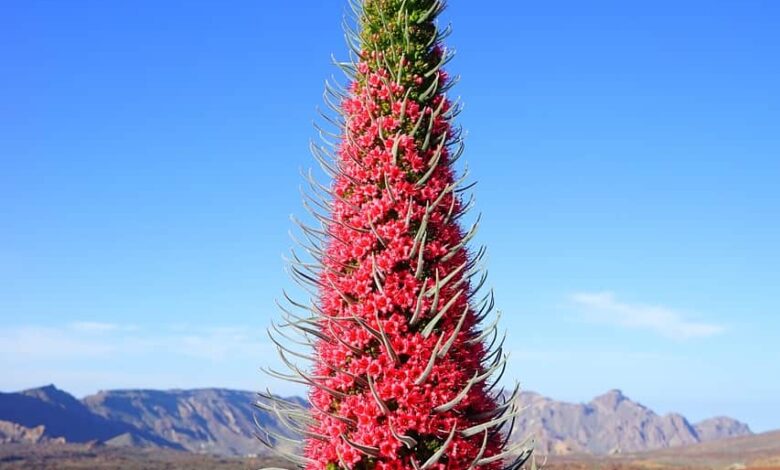
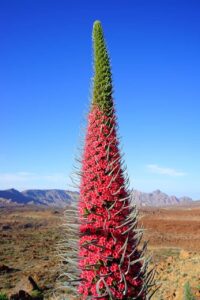 The tajinaste (Echium wildpretii) is a species of plant with an exuberant beauty that is evidenced by the inflorescences it produces .
The tajinaste (Echium wildpretii) is a species of plant with an exuberant beauty that is evidenced by the inflorescences it produces .
These are variable in color depending on the species, and can be found in blue or purple , for example.
The ideal is to have it planted directly in the garden as it requires very little care and in return it will give a very beautiful environment.
In addition, it is not very tall, reaching about three meters including the inflorescences, so it becomes quite useful for designing compositions .
Have you thought about giving your garden a unique and special touch?
Maybe the tajinaste is just what you might be looking for.
- When? In spring .
- Where? In full sunlight or in semi-shade.
- How do we prepare the land? With organic matter such as compost .
- How should we water? By dripping .
- How often do you have to water? Four times a week in summer and twice the rest of the year.
- What pests and diseases does it have? Be careful with puddling rots and snails.
Characteristics of the tajinaste
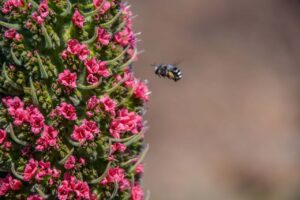 Echium wildpretii is a species of flowering plant in the Boraginaceae family .
Echium wildpretii is a species of flowering plant in the Boraginaceae family .
It is a biennial herbaceous plant that grows up to 3 meters in height. The species is endemic to the Canary Islands, and is found mainly in Las Cañadas del Teide.
The subspecies Echium wildpretii subsp. trichosiphon is found at high altitude in Las Palmas. Common names are jewel tower, red bugloss, Tenerife bugloss or Teide bugloss. The Spanish name for this plant is red tajinaste.
When did you sow tajinas?
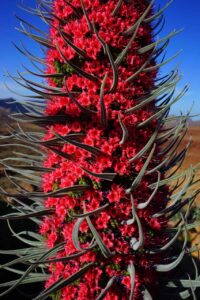 The ideal time to sow the tajinaste is during spring , preferably waiting for the risk of frost to pass.
The ideal time to sow the tajinaste is during spring , preferably waiting for the risk of frost to pass.
However, since the germination process of the seeds will be done in seedbeds, it could be started a little earlier, taking care that it enjoys some warmth.
Of course, the seeds only take a couple of weeks to germinate, so it is a fairly quick process that must be taken into account to plan well.
Where to plant a tajinaste?
The tajinaste is very adaptable around the planting place, although it does require some amount of light per day directly.
For this reason, it is best to keep it in a sunny place or, at least, in semi-shade.
How to prepare the land?
- The land for the tajinaste has to fulfill two fundamental requirements: rich in nutrients and with good drainage.
- Nutrition can be given by preparing the ground in advance with the help of some natural fertilizer that incorporates organic matter, such as compost .
- In the case of drainage, a mixture can be made with a component that helps in this process if the soil available is very clayey.
- If it is a plant that will be kept in a pot, because it accepts it without problems, making a mixture of perlite and sand will give it the necessary texture.
How do we water?
The amount of water used in each irrigation should be moderate to avoid flooding that could harm you.
The ideal is to take advantage of a gardening tool, such as the watering can, to offer only what is necessary.
How often do we water the tajinastes?
The amount of water will be directly linked to the irrigation times, which should not exceed four times a week in summer.
However, during the rest of the year this could be effectively reduced to about twice a week.
How to sow step by step?
The sowing of the tajinaste will be carried out by means of selected seeds , that is, healthy and of good quality.
The process to move forward in this case is as follows:
- Prepare the seedbed with some universal substrate and perlite. It is important that the amounts of both elements are identical to maximize the favorable environment. If using a homemade seedbed, make sure it has holes in the bottom for moisture to drain.
- Incorporate the seeds. As it is logical that the idea is to get the most out of the process, you can use two or three seeds per seeds or, if you have enough containers, one in each.
- Add a little substrate on each seed without making them too deep.
- Water with the help of a watering can so that the amount of water is not excessive. This process must be repeated frequently because humidity is very important for germination.
- Keep the seedbeds in a cool space and in semi-shade.
- Transplant the strongest seedlings to the selected pot or garden when they germinate.
The tajinaste develops quickly around the germination process, so in two or three weeks you will be enjoying the first shoots.
If transplanting is delayed and the cold period arrives, it is best to keep it in a pot and change to the garden when the weather is more favorable.
What care does the tajinaste need?
- One of the main care that the tajinaste needs is fertilization , if what you are looking for is to enjoy beautiful inflorescences.
- This will be applied between spring and summer, taking advantage of the fertilizers for flowering plants that are sold in branch stores.
- These are provided through the irrigation water, so they will be very easy to apply.
- When it is in a pot, it will be mandatory to transplant it to larger pots as the roots protrude from the lower part.
- This, in addition to helping it grow with much more leafiness, is a strategy to prevent the roots from being damaged by excessive enclosure.
What pests and diseases affect you?
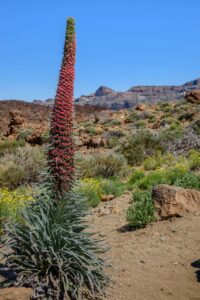 The tajinaste is a very resistant plant to most pests and diseases.
The tajinaste is a very resistant plant to most pests and diseases.
It is possible that it is attacked by fungi if the ground conditions are not correct and there are puddles.
On the other hand, in the early stages of planting, especially when it is done in gardens, it is necessary to take special care with snails .
This is because they are pests capable of consuming young seedlings because they have a more tender texture.
The tajinaste is a very useful plant on a decorative level and also offers few concerns around resistance.
In fact, it is able to survive frosts that are short , although care must be taken that the temperature does not drop below -3 ° C because it could be harmful.
Of the rest, it only remains to maintain the basic care of irrigation and fertilization to enjoy its beauty and color at the right time.

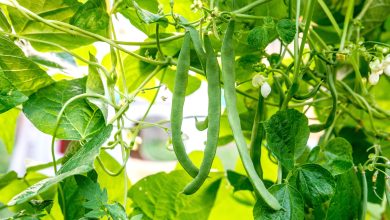
![Photo of The 10 Most Beautiful Air Plants [Features and photos]](https://www.complete-gardening.com/wp-content/uploads/2022/08/the-10-most-beautiful-air-plants-features-and-photos-390x220.png)
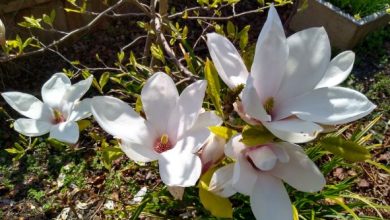
![Photo of Prune a Wisteria: [Importance, Time, Tools, Considerations and Steps]](https://www.complete-gardening.com/wp-content/uploads/2022/08/prune-a-wisteria-importance-time-tools-considerations-and-steps-390x220.jpg)